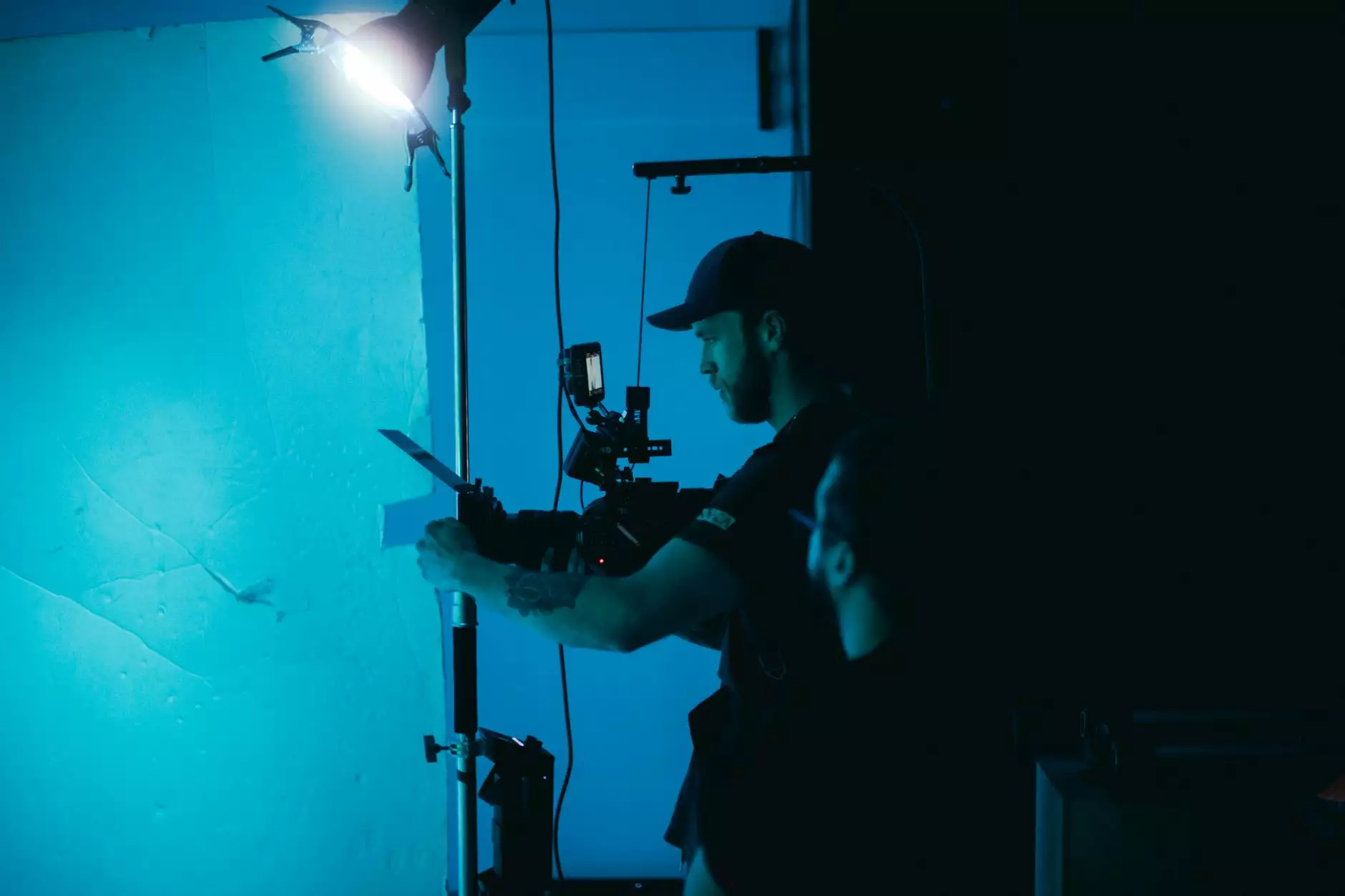Enhancing Your Projects with **Storyboard Applications**

In the fast-paced world of graphic design and web design, effective communication of ideas is critical. One powerful tool for achieving this is a storyboard application. These applications offer a structured way to visualize and organize ideas, workflows, and narrative elements before actual production begins. By diving deeper into the realm of storyboard applications, we can uncover their pivotal role in enhancing creativity, boosting productivity, and fostering collaboration among teams.
What is a Storyboard Application?
A storyboard application is a digital tool that allows users to create, edit, and manage storyboards. This involves visually representing sequences of events or scenes in a coherent format. Typically used in various industries such as film, animation, marketing, and product design, storyboard applications are particularly beneficial for visual thinkers and creators. They enable designers to sketch out ideas, draft narratives, and plan visual content in an organized manner.
Key Features of a Storyboard Application
When considering a storyboard application, it's essential to look for several key features that enhance usability and effectiveness:
- User-Friendly Interface: A clean, intuitive design that allows users to focus on creativity without getting bogged down by complicated tools.
- Drag-and-Drop Functionality: Simplifies the process of adding images, characters, and elements to the storyboard.
- Collaboration Tools: Ability to share storyboards with team members for feedback and collaboration in real-time.
- Export Options: Capability to export storyboards in various formats (PDF, JPEG, etc.) for presentations and sharing.
- Integration with Other Tools: Compatibility with graphic design and web design software for seamless workflow.
The Significance of Storyboard Applications in Graphic Design
In the realm of graphic design, the importance of visual storytelling cannot be overstated. Here’s why storyboard applications are integral to the creative process:
1. Enhanced Visual Communication
Graphic designers often need to convey complex ideas in a clear and visually appealing manner. A storyboard application allows for the quick visualization of concepts, helping designers express their thoughts more effectively. Whether it's for an advertisement, a logo design, or a complete branding project, storyboards provide a strong base for discussions with clients.
2. Improved Project Management
By breaking down a project into smaller, manageable sections, designers can keep track of progress and deadlines. Storyboard applications facilitate this process, allowing teams to visualize the timeline of a project and allocate resources more effectively. This leads to better time management and adherence to delivery schedules.
3. Brainstorming Made Easy
Having a dedicated space to jot down ideas, sketch rough drafts, and organize thoughts is invaluable in the brainstorming phase. A storyboard application serves as a digital whiteboard where designers can experiment with different possibilities without committing to one single direction initially.
The Application of Storyboard Applications in Web Design
Web design thrives on delivering user-friendly, aesthetically pleasing experiences. Here’s how storyboard applications can enhance that process:
1. Defining User Journeys
User experience (UX) designers can leverage storyboard applications to map out the user journey across a website. By visualizing the steps a user will take, designers can identify potential pain points and improve navigation paths, ultimately leading to a more satisfying user experience.
2. Prototyping and Wireframing
Before diving into actual coding, web designers can create visual prototypes using a storyboard application. These prototypes can simulate how the final product will look and function. This process is critical in aligning client expectations with design capabilities.
3. Collaboration Between Teams
Web design often requires collaboration between various departments, including marketing, development, and design. A storyboard application facilitates this collaboration by allowing team members to contribute to and modify the storyboard in real-time. This enhances communication and ensures everyone is on the same page throughout the design process.
Top Storyboard Applications in the Market
With the growing demand for effective storyboard tools, several storyboard applications have gained popularity. Here are some top contenders:
- Storyboard That: An online application that offers an expansive library of scenes, characters, and props for quick storyboard creation.
- Canva: While primarily a graphic design tool, Canva incorporates storyboard features that are great for visually planning projects.
- Plot: Focused on the film and video industry, this app offers robust features for narrative-driven storyboarding.
- Scribble: A straightforward, user-friendly option for those who want to quickly draft storyboards and share them.
- Figma: Primarily a design tool for UI/UX, but includes functionalities that allow for effective storyboarding of web projects.
Benefits of Using a Storyboard Application
The integration of a storyboard application into your design process can unlock numerous benefits, including:
1. Boosted Creativity
Creativity thrives in organized environments. A visual representation of ideas can inspire new directions and enhancements that may not have been considered otherwise.
2. Streamlined Feedback
Gathering feedback becomes easier when visuals are involved. Stakeholders can provide specific comments on particular elements of the storyboard rather than abstract concepts, leading to more constructive discussions.
3. Increased Productivity
With clear visualizations and organized ideas, the workflow becomes more efficient. Designers can spend less time deciphering vague concepts and more time executing their visions.
5. Versatility Across Industries
From advertising to education, the versatility of storyboard applications translates across various industries, making them valuable tools for any creative professional.
Overcoming Challenges with Storyboard Applications
Despite the myriad benefits, some may encounter challenges when utilizing storyboard applications. Here are some common hurdles and how to address them:
1. Learning Curve
Not all storyboard applications are created equal, and some can come with a steep learning curve. To overcome this challenge, take advantage of online tutorials and support forums. Many applications offer guided walkthroughs to help new users get accustomed to the tools available.
2. Integration with Other Tools
Sometimes, a storyboard application may not seamlessly integrate with other software in your workflow. Before committing, check for compatibility with your existing tools, or find applications that facilitate easy exports and imports.
3. Over-Reliance on Technology
While technology offers powerful solutions, it’s essential to balance digital tools with traditional methods when necessary. Some ideas may be best captured on paper before transitioning to digital formats.
Future Trends in Storyboard Applications
The evolution of technology continues to shape the landscape of design tools. Here's what the future may hold for storyboard applications:
1. AI Integration
Artificial intelligence could potentially streamline the storyboard creation process further by offering automated suggestions for scenes, characters, and even layouts, allowing creators to focus more on the narrative aspects of their projects.
2. Enhanced Collaboration Features
With remote work becoming the norm, future storyboard applications may incorporate advanced collaboration tools that enable teams to work together, regardless of geographical locations, in real-time.
3. Virtual Reality (VR) Capabilities
As VR technology becomes more accessible, integrating VR capabilities into storyboard applications could revolutionize how designers plan projects, allowing for an immersive experience that traditional storyboarding cannot provide.
Conclusion
In a world where visual communication is paramount, storyboard applications offer essential advantages in both graphic design and web design. They enhance creativity, facilitate collaboration, and streamline project management, ultimately leading to successful outcomes. As you embark on your creative projects, consider incorporating a storyboard application into your toolkit to take your designs to the next level.
Visit Krock.io to explore more about how effective design strategies can elevate your creative projects.









